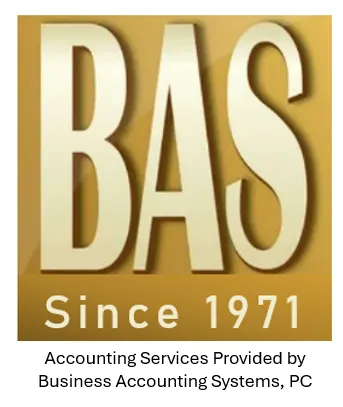Summertime provides a critical window to reassess your financial situation for 2025, and to implement tax-saving strategies while there’s still time to adjust course. Here are several high-impact tax moves to consider as tax-saving strategies for yourself this summer.
- Revisit your estimated tax payments. Now that it’s midyear, you may have a good idea whether your income will be substantially higher, lower, or about the same for 2025 compared to 2024. Revisit your income projections for 2025 and run updated estimates, especially if you’re self-employed or are an owner of a pass-through entity, to determine whether your quarterly estimated tax payments are aligned with your actual liability.
- Tax-loss harvesting, summer edition. Review your investment portfolio for underperforming assets that could be sold to realize a loss. These realized losses can offset capital gains elsewhere in your portfolio and reduce your taxable income. Many investors wait until year-end to do this, but executing tax-loss harvesting in the summer offers greater flexibility for reinvesting and repositioning your portfolio for the remainder of the year. Just be mindful of the IRS’s wash sale rule.
- Contribute to charities now. Summer is a fantastic time to contribute to charities. If you’re planning a big donation, consider using a donor-advised fund or donating appreciated securities. You’ll avoid capital gains tax on the growth and get the deduction at fair market value. Even better: doing this in June or July gives the receiving institutions more time to plan, and lets you avoid the seasonal year-end rush when everyone floods charities and the paperwork backlog begins.
- Maximize retirement contributions early. Sure, you have until December 31st (or April 15th in some cases) to contribute. But why wait? Max out your 401(k), SEP IRA, or defined benefit plan now and let compounding start sooner. If you’re in a cash-rich year, fully funding these accounts can be a major win—especially for those in the top tax brackets trying to defer income.
- Review entity structures. If you have substantial passive income, such as from real estate, royalties, dividends, or alternative investments, summer is an ideal time to evaluate tax efficiency. Are your real estate holdings optimized through an LLC? Are you leveraging qualified business income deductions where applicable? A midyear review allows time to consult with advisors and implement changes in ownership structures, elections, or allocations before year-end deadlines begin to restrict flexibility.
- Consider changing residency for tax purposes. Some states tax income like it’s a civic duty. Others don’t at all. But this isn’t a simple switch – it requires clear, documented intent and consistent presence in your new state. Summer is the best time to begin the transition: spend the required number of days in the new state, update legal documents, and establish local ties that prove your domicile. Making these changes now gives you the runway needed to meet state requirements by year-end.
The most effective tax strategies aren’t reactive – they’re intentional. Summer offers a critical window to evaluate your financial standing, make adjustments, and prepare for the rest of the year with confidence.
Fractional Leases: Enjoy the Perks Without Owning the Price Tag
You’ve always wanted a luxury car. Or maybe a plane. But when it comes to pulling the trigger, reality steps in: the cost, the upkeep, the commitment. That’s where fractional leasing steps into the picture – a middle ground between renting and owning that lets you enjoy the rewards of your hard work without being weighed down by full-time responsibility. Here’s a look at fractional leasing and if it makes sense for you.
Background
A fractional lease is an arrangement where multiple parties share usage rights and costs for a high-value asset. Instead of owning the entire asset or renting for short-term use, you buy a fraction of time or equity—say, 1/4 or 1/8 of a Ferrari, a Cessna jet, or even a show horse. In return, you get scheduled access, a say in usage terms, and shared maintenance responsibilities.
Think of it like a timeshare, but for specialized or luxury goods. It’s popular in industries where full ownership doesn’t make sense for casual users, or where cost sharing significantly increases accessibility.
The Upside: Why Fractional Leasing Works
- Affordability without compromise. Full ownership of a luxury car or private jet might be out of reach, or even not justifiable, for most people. But splitting the cost four or eight ways? That opens doors. Fractional leasing offers a way to live large without emptying your bank account or tying up assets in depreciating toys.
- Reduced maintenance headaches. One of the biggest deterrents to owning high-end assets is upkeep. With fractional leasing, those responsibilities, and the associated costs, are shared. Most fractional programs include professional management, which means someone else handles scheduling, maintenance, cleaning, and logistics.
- Try before you buy. A fractional lease is a great way to dip your toe in before diving in headfirst. Thinking of buying a boat or a piece of artwork? Leasing a fractional share first lets you experience the reality without the irreversible commitment.
- Tax and legal benefits. In some cases, fractional leasing can provide tax advantages, such as deductions for business use or capital cost allowances. It’s also less legally entangled than full co-ownership, where resale and liability issues can be complicated.
The Tradeoffs: What to Watch Out For
- Limited flexibility. You’re not the only one with the keys. With fractional leases, you’re bound to a schedule and availability might be constrained, especially during peak seasons or events. You’ll need to plan ahead, and spontaneous access could be a problem.
- Lack of full control. Unlike ownership, which allows you to do whatever you want with your asset, fractional leases come with rules. There may be restrictions on mileage, wear and tear, modifications, and even where or how the asset can be used.
- No equity or appreciation. Unlike with traditional ownership, you may not be building equity with fractional leases. In most cases, your share doesn’t appreciate and you don’t get a return on sale. In fact, depreciation is shared across all lessees, and exiting a lease early might come with penalties.
- Exit complexity. Speaking of getting out, reselling your share in a fractional lease can be tricky. Demand is niche, and resale markets are limited. Some contracts lock you in for several years or require you to sell back to the operator, often at a loss.
A fractional lease is not just a clever way to share costs, it’s a way to reclaim your time, free up capital, and enjoy high-end experiences on your own terms.
You Don’t Need to Be a Millionaire to Make Your Kid a Millionaire
Raising a millionaire doesn’t require winning the lottery or launching a tech startup. It requires something far more practical: intention, consistency, and a long-term mindset. Here’s how you can make your child a millionaire even if you aren’t one right now.
- Start early, start small. The greatest asset you can give your child isn’t money – it’s time. Thanks to compound interest, even modest savings can grow into seven figures if you start early enough. To do this, your child needs earned income, which could come from part-time jobs, babysitting, or even helping with your small business. Once they’re earning, you can match their contributions to a custodial Roth IRA up to the amount they made that year. It’s a tax-efficient way to build long-term wealth, and it turns early hustle into lifelong security.
- Teach the habits, not just the math. Focus less on teaching stock analysis and more on acquiring core habits: save before you spend, understand needs vs. wants, and invest regularly without trying to time the market. Show them how automatic transfers work. Walk them through the difference between compound and simple interest. Better yet, let them run a mock portfolio or use a savings app designed for teens. The lesson isn’t about chasing the highest return – it’s about consistency and mindset.
- Make money real. We live in a swipe-and-click economy, which makes it easy for kids to see money as abstract. That’s why it’s crucial to make it tangible. Instead of an allowance with no strings, give them opportunities to earn. Pay for chores, encourage them to sell old toys online, or help them launch a weekend hustle. Then, help them budget. Break their income into percentages, such as 50% for saving & investing, 30% for spending, and 20% for giving.
- Invest in financial literacy, not just college. You can pour hundreds of thousands into a college education. But if your child graduates without understanding debt, interest rates, or how to read a paycheck stub, you’ve missed a critical piece of their success. Make financial literacy part of their real education, as knowledge compounds just like money. The earlier they start learning, the greater the payoff.
- Ownership is the endgame. The best way to create generational wealth is to give your child ownership. Not just in the financial sense, but also in mindset. That means encouraging them to take responsibility for their money, their goals, and their time. It’s also about exposing them to the world of investing early. If they understand that they can own pieces of companies (via stocks), own time (by saving and compounding), and eventually own assets that generate income (real estate, businesses, index funds), they start to see the path to wealth differently. It’s not a mystery…it’s a matter of decisions.
Making your kid a millionaire isn’t about you being their bank whenever they need money. It’s about handing them a roadmap and teaching them to navigate. That means talking about money openly. Let them see your wins and your mistakes. Let them ask questions. Be honest about what you’ve learned the hard way. They’ll become confident, capable adults who know how to build, keep, and multiply what they earn.
As always, should you have any questions or concerns regarding your tax situation please feel free to call.This publication provides summary information regarding the subject matter at time of publishing. Please call with any questions on how this information may impact your situation. This material may not be published, rewritten or redistributed without permission, except as noted here. This publication includes, or may include, links to third party internet web sites controlled and maintained by others. When accessing these links the user leaves this newsletter. These links are included solely for the convenience of users and their presence does not constitute any endorsement of the Websites linked or referred to nor does Business Accounting Systems, P.C. have any control over, or responsibility for, the content of any such Websites. All rights reserved.

